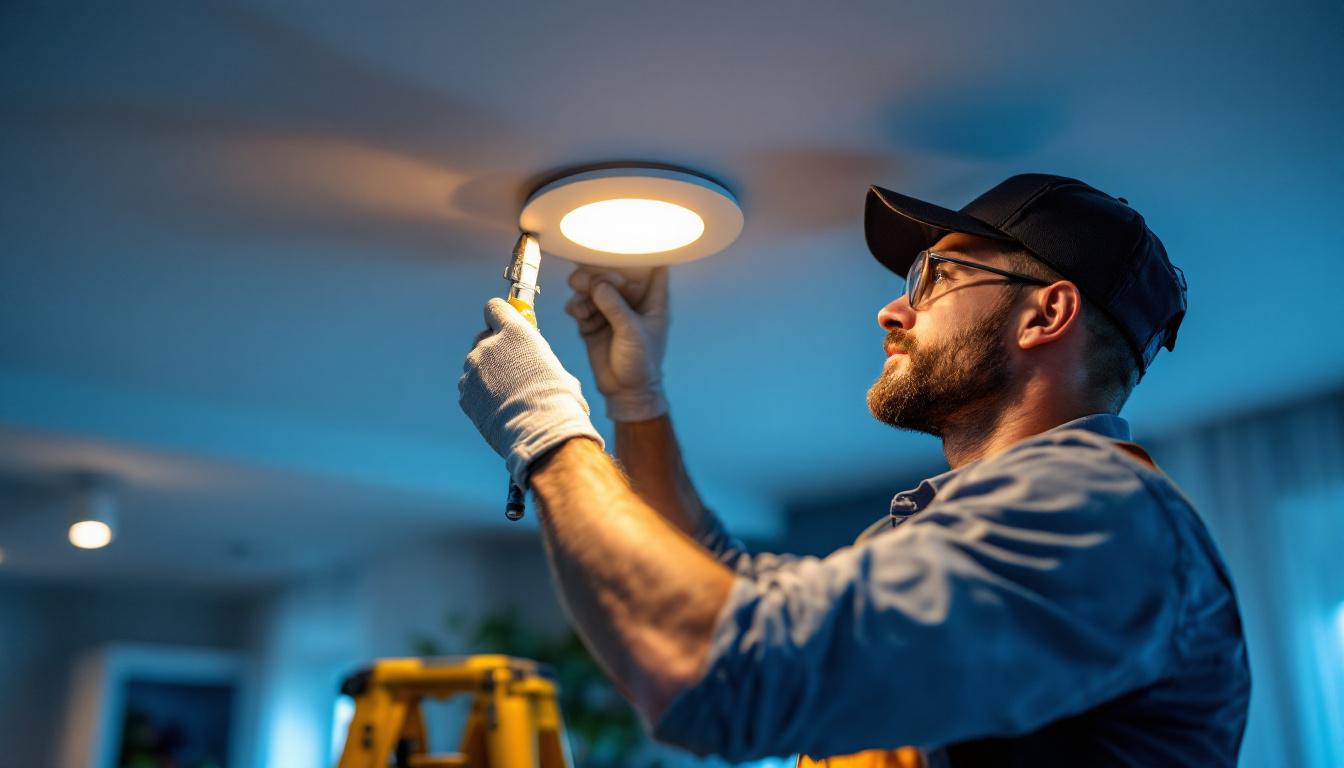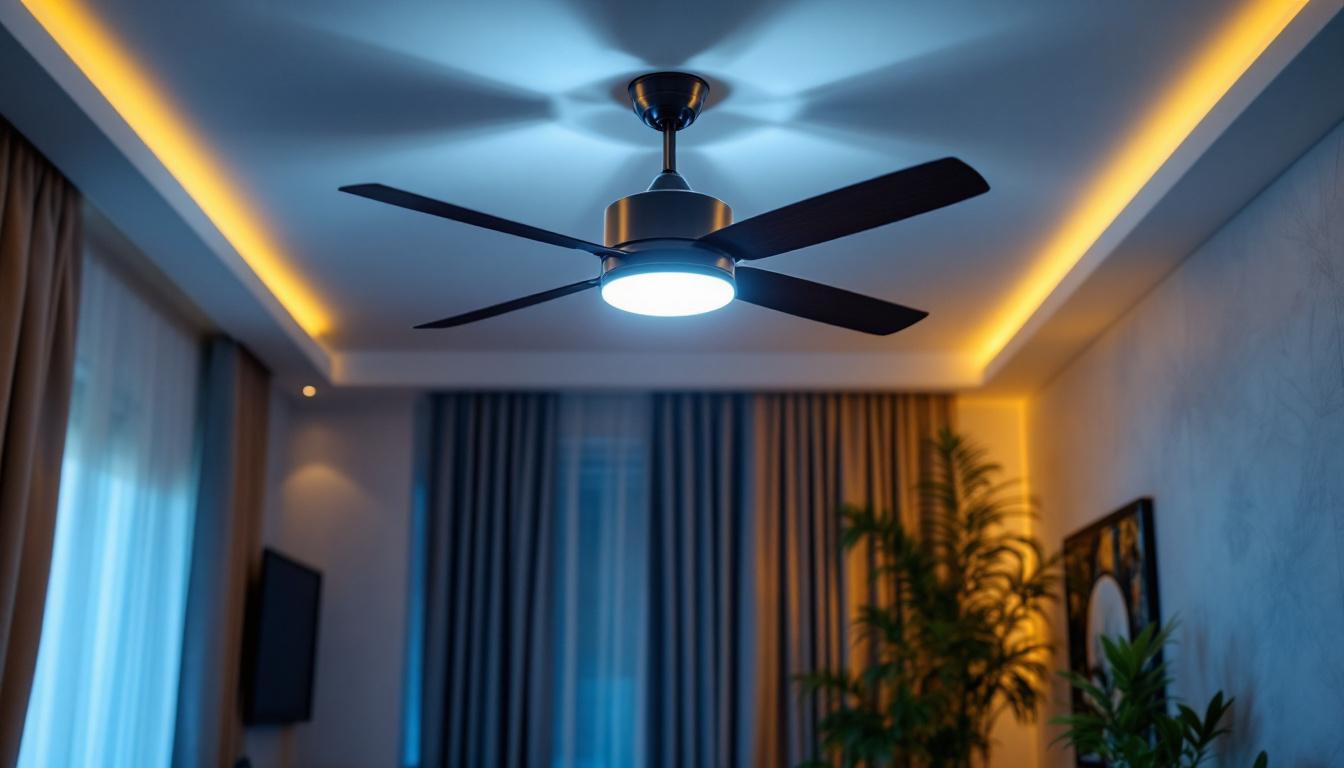
Lighting contractors face a myriad of challenges when it comes to installing and maintaining wall switches for ceiling fans and lights. These challenges can range from technical issues to customer preferences, all of which require a keen understanding of both electrical systems and client needs. This article delves into the top challenges that lighting contractors encounter in this specialized area, providing insights and potential solutions.
One of the primary challenges lighting contractors face is the technical complexity involved in wiring and configuring wall switches for ceiling fans and lights. Each installation may differ based on the existing wiring, the type of ceiling fan, and the desired functionality. The nuances of each project can often lead to unexpected hurdles, requiring contractors to think on their feet and adapt their strategies accordingly.
Contractors must be well-versed in local electrical codes and regulations, which can vary significantly. This knowledge is crucial to ensure safety and compliance, as improper installations can lead to electrical hazards or system failures. Staying updated with the latest codes is not just a matter of legality; it also reflects a contractor’s commitment to quality and customer safety, reinforcing their reputation in a competitive market.
Different ceiling fans and light fixtures may require specific wiring configurations. For instance, some fans come with integrated light kits that necessitate a different wiring approach than standalone fans. Understanding these configurations is essential for a successful installation. Additionally, the choice of wiring gauge can impact performance; using the correct gauge ensures that the electrical current flows efficiently, reducing the risk of overheating and potential fire hazards.
Moreover, the presence of multiple switches controlling a single fixture can complicate the wiring process. Lighting contractors must navigate three-way or four-way switch setups, which can be daunting without the proper experience and tools. In these scenarios, contractors often rely on detailed schematics and diagrams to guide their work, ensuring that each switch operates as intended. The ability to troubleshoot and resolve issues on the fly is a valuable skill that can save time and enhance customer satisfaction.
Compatibility between the wall switch and the ceiling fan/light fixture is another significant challenge. Not all switches are designed to handle the load of a ceiling fan, especially if it has variable speed settings. Using an incompatible switch can lead to performance issues or even damage the fan or light fixture. This is particularly important in modern installations where smart switches and home automation systems are becoming increasingly popular, as these devices often have specific requirements that must be met for optimal functionality.
Contractors must assess the specifications of both the switch and the fan/light fixture to ensure they will work harmoniously together. This often requires thorough research and sometimes even testing different configurations to find the best match. Furthermore, contractors may need to educate homeowners about the benefits of investing in compatible systems, highlighting how the right combination can enhance energy efficiency and provide greater control over their lighting and ceiling fan settings. By fostering this understanding, contractors can build trust and rapport with their clients, ultimately leading to more successful projects and referrals.
In addition to technical challenges, lighting contractors must also consider the preferences and expectations of their clients. Customers often have specific desires regarding the functionality and aesthetics of their lighting systems, which can complicate the installation process.
Understanding these preferences is crucial for contractors, as it directly impacts customer satisfaction and the likelihood of repeat business. Effective communication and consultation are key to aligning the contractor’s expertise with the client’s vision.
Clients may have particular styles in mind for their wall switches and fixtures. Whether they prefer a modern look or a more traditional design, the choice of materials and finishes can significantly affect the overall appearance of a room.
Lighting contractors must stay informed about the latest trends in design and technology to offer suitable recommendations to their clients. This knowledge not only helps in selecting the right products but also enhances the contractor’s credibility and professionalism.
Modern lighting systems often come with advanced features such as dimming capabilities, remote control, and smart home integration. Clients may expect these functionalities to be included in their installations, which can pose a challenge for contractors who may not be familiar with the latest technologies.
Contractors need to educate themselves about smart switches and compatible ceiling fans, ensuring they can provide clients with the options they desire. This may involve additional training or collaboration with technology providers to stay updated on the latest innovations.
Installation itself can present a range of challenges for lighting contractors. From physical constraints in the installation space to unforeseen complications during the process, contractors must be prepared to adapt and troubleshoot as needed.
Effective project management and problem-solving skills are essential for navigating these challenges. Contractors must be able to think on their feet and find solutions that meet both technical requirements and client expectations.
In many cases, the physical space where a ceiling fan or light fixture is to be installed may not be ideal. Obstructions such as beams, ductwork, or low ceilings can limit the options available for installation.
Contractors must assess the site carefully and determine the best approach to overcome these limitations. This might involve repositioning fixtures, using alternative mounting methods, or even recommending different products that better suit the space.
During the installation process, unexpected issues can arise, such as discovering outdated wiring or structural problems that were not apparent during the initial assessment. These complications can lead to delays and increased costs, which can be frustrating for both contractors and clients.
To mitigate these issues, contractors should conduct thorough pre-installation assessments and communicate openly with clients about potential challenges. Setting realistic timelines and budgets can help manage client expectations and foster trust.
Safety is paramount in any electrical installation, and wall switches for ceiling fans and lights are no exception. Lighting contractors must adhere to strict safety standards to protect both themselves and their clients.
Failure to comply with safety regulations can have serious consequences, including fines, liability issues, and, most importantly, the risk of electrical fires or injuries. Therefore, understanding and implementing safety measures is a critical aspect of a contractor’s responsibilities.
Every region has its own set of electrical codes and regulations that must be followed. These codes dictate everything from wiring methods to the types of materials that can be used. Contractors must stay informed about these regulations to ensure compliance and avoid potential legal issues.
Regular training and certifications can help contractors remain up-to-date with changing codes and standards. This commitment to safety and compliance not only protects the contractor but also enhances their reputation in the industry.
Beyond compliance, contractors should implement best practices for safety during installations. This includes using appropriate personal protective equipment (PPE), ensuring that power is turned off before beginning work, and following proper lockout/tagout procedures.
Additionally, educating clients about safety practices, such as avoiding the use of damaged switches or fixtures, can further enhance overall safety in the home. This proactive approach can help prevent accidents and build trust with clients.
Another challenge lighting contractors face is educating customers about their options and the importance of proper installation. Many clients may not fully understand the technical aspects of lighting systems, which can lead to unrealistic expectations or misunderstandings.
Effective communication is essential in bridging this knowledge gap. Contractors must be able to explain complex concepts in simple terms, ensuring that clients are informed and comfortable with the decisions being made regarding their lighting installations.
When discussing wall switches for ceiling fans and lights, contractors may need to explain various technical concepts, such as load capacity, wiring configurations, and the benefits of different types of switches. Providing clear explanations can help clients make informed decisions and feel more confident in their choices.
Visual aids, such as diagrams or product samples, can also be beneficial in helping clients understand the installation process and the functionality of different components. This approach not only enhances client satisfaction but also fosters a sense of partnership between the contractor and the client.
Contractors must also set realistic expectations regarding timelines, costs, and potential challenges. Clients may have a vision of a quick and easy installation, but the reality can often be more complex. By being transparent about the process, contractors can help clients understand what to expect and reduce the likelihood of disappointment.
Regular updates throughout the installation process can further enhance client satisfaction. Keeping clients informed about progress, challenges, and any adjustments to the original plan fosters trust and communication.
Installing wall switches for ceiling fans and lights presents a unique set of challenges for lighting contractors. From navigating technical requirements and addressing customer preferences to managing installation complexities and ensuring safety, contractors must be equipped with a diverse skill set and knowledge base.
By understanding these challenges and proactively addressing them, lighting contractors can enhance their service offerings and build lasting relationships with their clients. Continuous education, effective communication, and a commitment to safety and compliance are essential components of success in this field.
Ultimately, the ability to adapt to challenges and provide exceptional service will set contractors apart in a competitive market, ensuring they remain a trusted resource for lighting solutions.
As a lighting contractor, you understand the importance of having the right tools and materials for the job. At LumenWholesale, we support your commitment to excellence by providing high-quality, spec-grade lighting products at the best wholesale prices. Our extensive selection is designed to meet the highest industry standards, ensuring you can tackle any installation challenge with confidence. Plus, with free shipping on bulk orders, you can stock up on premium lighting without worrying about hidden fees or compromises. Elevate your lighting projects with the perfect blend of quality, affordability, and convenience. Wholesale Lighting at the Best Value is just a click away.

Discover the benefits of dusk till dawn outdoor light fixtures and learn how to future-proof your lighting projects.

Discover the best LED recessed light retrofit practices for optimal energy savings and enhanced lighting.

Discover how outdoor lamp sockets can revolutionize your lighting installation projects by enhancing efficiency, flexibility, and design possibilities.

Discover why choosing the right ceiling fans with lights is crucial for lighting contractors.